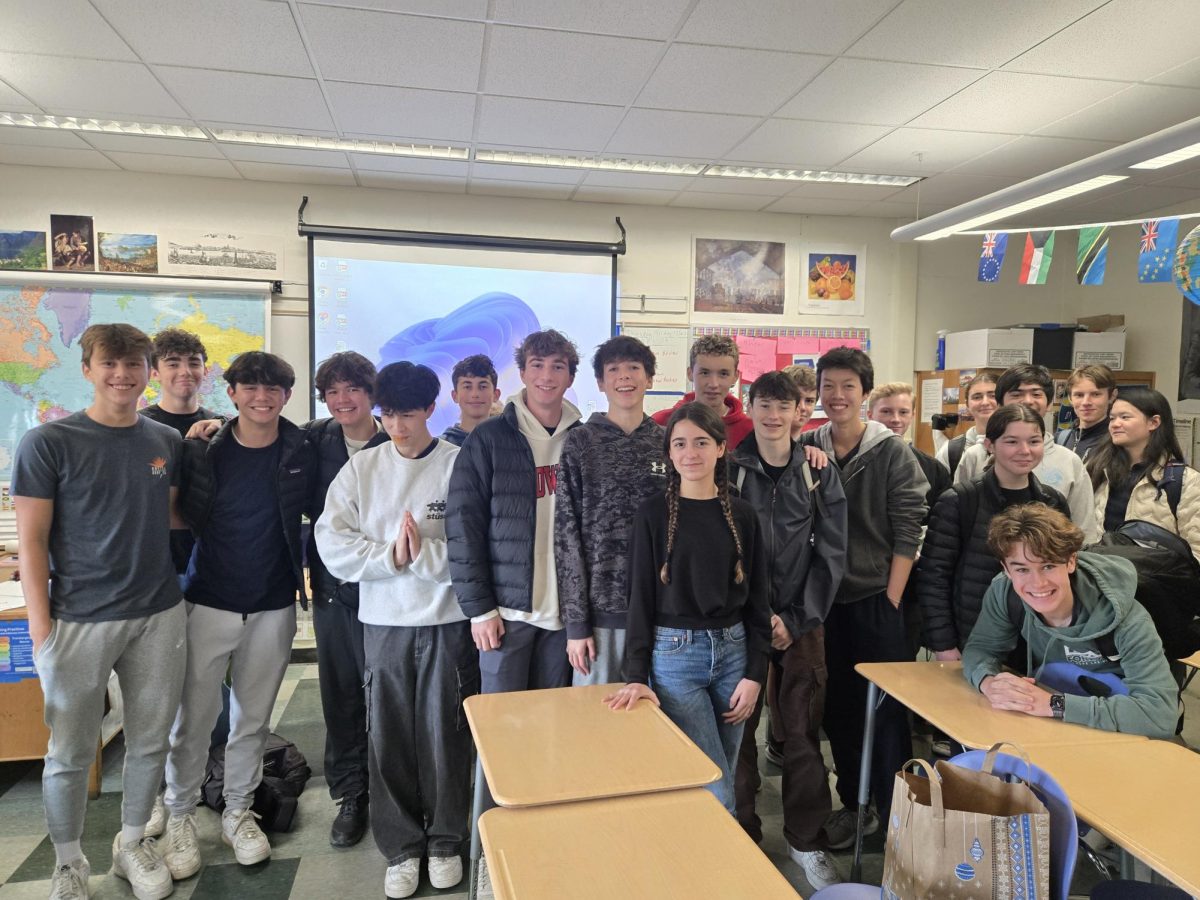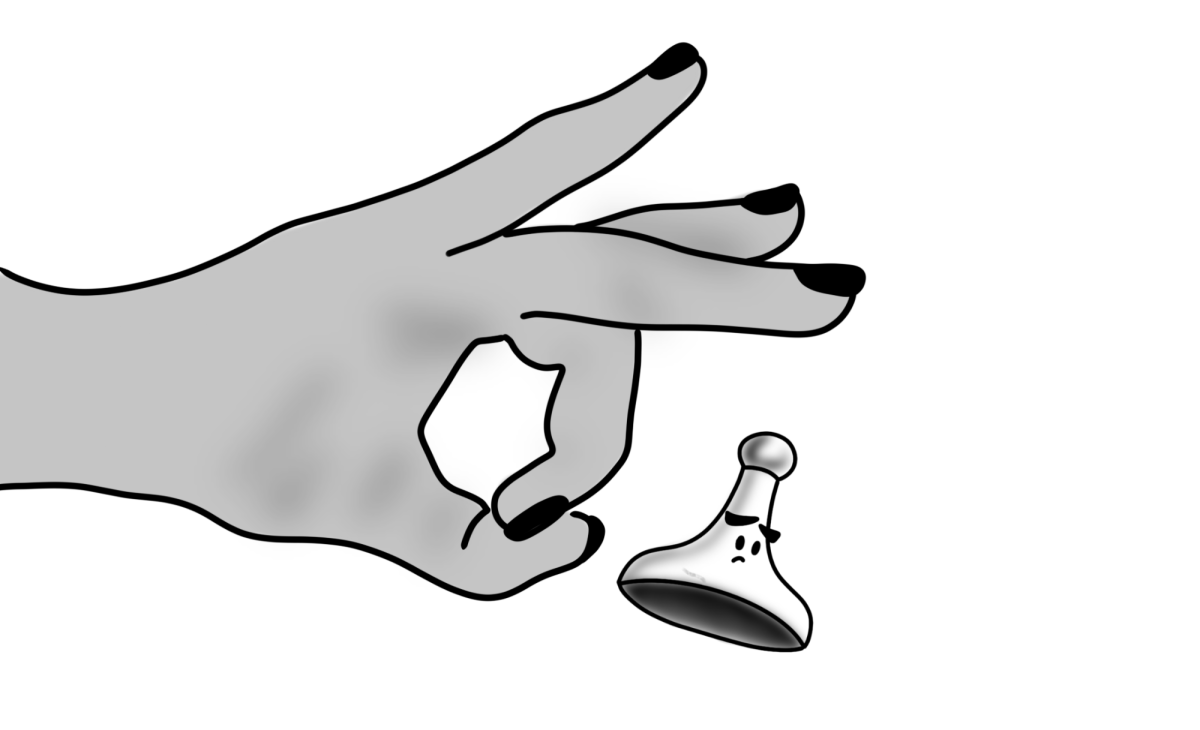Ricky Staub’s ‘Concrete Cowboy’ paints a beautiful picture of the little-known Black cowboys in America
April 16, 2021
Deep in the heart of Philadelphia lies a place called Fletcher Street. It has everything one would expect to see in an urban neighborhood, with cars scattered among the area and houses lined along the streets. However, there is one unexpected aspect that stands out above all others: horses. Cowboys have long since held their reign as a crucial element of American western culture. When thinking of a cowboy, the first image that comes to mind is usually along the lines of a white man in tacky boots, often wearing an outfit that would be deemed “country-esque.” The whitewashing of cowboys neglects the rich history of Black horse riders who have spent many generations tending to their horses and nurturing a tight-knit community.
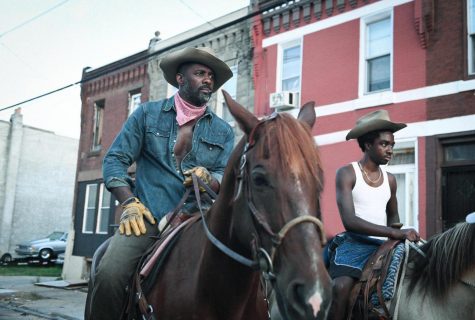
Ricky Staub’s coming-of-age Netflix film, “Concrete Cowboy,” fictionally narrates the story of Cole, a rebellious teenager who goes to live with his father in Philadelphia during the summertime. His father, Harp, played by Idris Elba, is part of the Fletcher Street urban cowboys, to Cole’s surprise. Despite this story being fictional, the Fletcher Street cowboys are a real group based in north Philly and are part of a century-long tradition of Black urban cowboys who care for their horses and teach neighborhood youth to do so as well.
Cole, played by Caleb McLaughlin, was an angry young man in the beginning of the film. He quickly latched onto Smush, a teenager in the area who was involved in drug dealings and crime. Simultaneously, Cole reluctantly grew closer to the cowboy community. Two paths opened up for Cole: One of joining the Fletcher Street riders and another of the dangerous alluring life on the streets. The film captivatingly takes the viewer along Cole’s journey of finding himself, all while diving into the history of the Black urban cowboys. It was very interesting to be able to learn about the Fletcher Street riders in a movie as opposed to a documentary. By including a fictional main character, who was as clueless about the Black cowboys as the average viewer, it was much easier to relate to. At times, it also made it more emotional when learning about the hardships the riders had faced, whether that be individually or together.
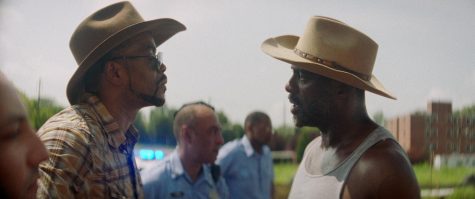
Staub does an amazing job representing tradition and relationships throughout the movie. A particular scene that stands out is one where Cole and other Fletcher Street riders sit around a campfire. Nessie, one of the characters, perfectly sums up the importance of this by saying, “A horse is meant to be free. [The] only way you can realize its true spirit, its nature, is through love.” This emotional scene showcases the compassion that Black cowboys prioritize in their community. After being introduced to the closeness that the cowboys so freely expressed, Cole’s worldview shifted to one of friendship and strength, instead of anger and negativity.
The character development from the beginning of the film compared to the end was incredibly inspirational. At the start, we see Cole as a teenager constantly getting into trouble and disappointing his mother. Throughout the film, we get to watch as small breakthroughs chip away at his cold, arrogant exterior, revealing a young man that only wants the same thing as everyone else: a family. Although this conclusion did not arrive without bumps in the road, it shows how the process of healing is not linear. There are ups and downs in life, and that’s just the way it is. Watching Cole grow into a new version of himself was truly heartening and impactful.
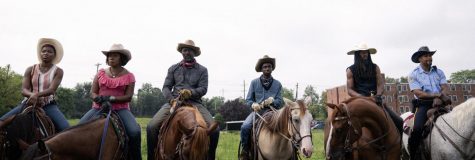
The inspiration for “Concrete Cowboy” was taken from the book, “Ghetto Cowboy” (2013), where the author, G. Neri, articulates a very similar picture. However, his book also focuses on the African-American cowboys of Brooklyn. Although their program shut down in 2016, they focused on keeping alive the tradition and memory of Black cowboys in the Old West, through their stables located on the border of Brooklyn and Queens in New York City.
This film is not only extremely entertaining, but it is also very valuable in terms of crushing harmful and ignorant stereotypes. Staub thoroughly captures the rich culture of Black cowboys, which is an element of American culture that lacks representation in modern-day Hollywood. The concept of a Black cowboy, much less an entire community of them, is not widely known or appreciated enough. The disregardance of Black cowboys is just one example of the unknown and unique history of African Americans in the US. Staub does a fantastic job illustrating the little-known community of dedicated and kind Black cowboys who lift each other up and provide an unwavering support system for their friends in “Concrete Cowboy.” As Harp said at the end, “Home isn’t a place. It’s a fam. That’s what makes us cowboys.”

